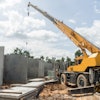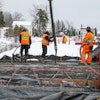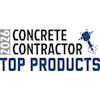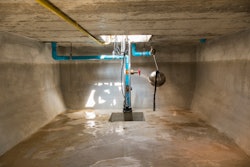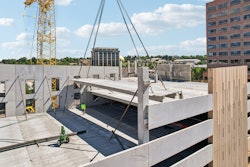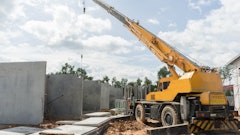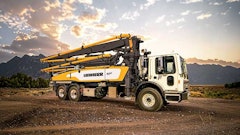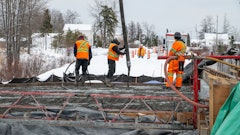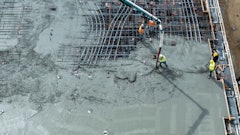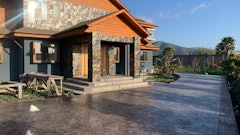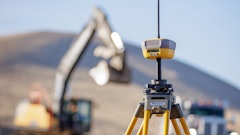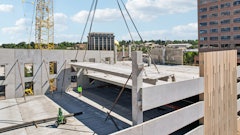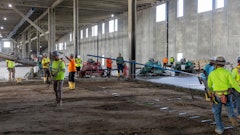
We all know concrete is a top construction material known for its compressive strength and durability. But over time, even the strongest placements can be affected by outside factors, like seismic activity and weather. Neglecting any foundation problems can lead to structural instability, failures, and very costly repairs.
Concrete Contractor connected with Kyle Tourjé, executive vice president of Alpha Structural Inc., to learn about working in a seismically active area and further explain how replacement and seismic retrofitting of concrete structures can improve earthquake resilience.
Q. What is Alpha Structural Inc.?
 Kyle Tourjé is a second-generation contractor specializing in structural retrofitting, repair, and geohazard mitigation throughout Southern California. As Executive Vice President of Alpha Structural Inc., he oversees all engineering and construction operations. Having grown up in the trade and with over 15 years of experience — including personally repairing and inspecting over 6,000 structures — Kyle combines hands-on construction and field engineering expertise with leadership in real estate and disaster response. His work bridges the gap between engineering solutions and the realities of property ownership and management, code compliance, and disaster response. With a background spanning construction, insurance claims, and litigation support, he applies practical solutions to California’s evolving structural, legal, and environmental challenges. Kyle’s focus is on advancing straightforward, lasting solutions that improve safety and resilience for communities across the region.Alpha Structural Inc.
Kyle Tourjé is a second-generation contractor specializing in structural retrofitting, repair, and geohazard mitigation throughout Southern California. As Executive Vice President of Alpha Structural Inc., he oversees all engineering and construction operations. Having grown up in the trade and with over 15 years of experience — including personally repairing and inspecting over 6,000 structures — Kyle combines hands-on construction and field engineering expertise with leadership in real estate and disaster response. His work bridges the gap between engineering solutions and the realities of property ownership and management, code compliance, and disaster response. With a background spanning construction, insurance claims, and litigation support, he applies practical solutions to California’s evolving structural, legal, and environmental challenges. Kyle’s focus is on advancing straightforward, lasting solutions that improve safety and resilience for communities across the region.Alpha Structural Inc.
We provide a full range of structural repair, engineering, and construction services. Our work includes coastal and hillside structural repairs, structural steel and concrete repair, foundation replacement, landslide remediation, slope stabilization, deep foundation systems, and retaining walls of all types. We offer both engineering and construction under one roof, ensuring seamless coordination from design through completion.
Q. What are the most common issues in concrete foundation repair? What causes these?
The most common issues we see in concrete foundation repair are geology-related. Substandard bearing materials often impact the performance of foundation systems, leading to settlement or instability. Corrosion-related damage is another major factor, causing severe distress to concrete structures and foundations. Drainage problems are also a common issue, as poor water management accelerates deterioration over time.
Q. Often, people get into the concrete industry through their family. How did you find yourself at Alpha Structural?
The same way. Alpha Structural is a second-generation company. My father, Dave Tourjé, founded it and remains involved today. I now oversee the company’s technical operations. You could say I was born into this line of work; I’ve grown up in the trade and built my career around structural retrofitting, repair, and geohazard mitigation throughout Southern California.
Q. What were some of the most interesting things you learned/experienced in your time as a structural assessor?
One of the most fascinating things has been seeing the evolution of design and construction practices from the late 1800s to today. You start to notice how some systems were poorly designed and failed over time, while others, built by highly skilled engineers and contractors in the early 1900s, have lasted more than a century. From a technical perspective, those contrasts are incredible to witness firsthand. It’s shown me that, while building codes certainly play a role, the real difference often comes down to the individual builder or engineer. I’ve seen hillside structures built in 1910 that were more advanced than some buildings constructed today.
Q. So many factors have to be taken into consideration, in your opinion, where does structural engineering end and the concrete contractor’s job begin? How do you see these differ?
Having a concrete contractor’s input during the engineering design phase is one of the most critical elements in executing a job correctly. That’s why we integrate both roles in-house. Collaboration between engineers and contractors is essential. The design relies on the engineer’s experience and the specified load demands, but the actual construction and constructibility are largely the responsibility of the concrete contractor. Often, a disconnect between engineer and contractor can lead to project delays, performance issues, or disagreements.
Early collaboration is key.
Ideally, a concrete contractor is involved from the very beginning. If that’s not possible, their role typically begins during the bidding process, including submitting RFIs to the engineer to clarify or suggest adjustments before construction starts.
 Structural repair to a tilt-up building using lateral structural framing reinforcement and structural steel vertical and lateral reinforcement systems.Alpha Structural Inc.
Structural repair to a tilt-up building using lateral structural framing reinforcement and structural steel vertical and lateral reinforcement systems.Alpha Structural Inc.
Q. You’re quoted as saying, “There is no such thing as an overabundance of caution.” Coming from such a seismically active area, what do concrete contractors do differently in Southern California to ensure a long-lasting foundation for residential, multi-family, commercial, or industrial property?
In Southern California, we execute plans specifically designed to resist seismic forces, which many other states don’t require. Our building codes include detailed seismic design criteria, but proper execution is just as important. This includes correct placement of reinforcing steel, using high-strength concrete mixes, and ensuring that rebar is installed properly to prevent corrosion and maintain long-term foundation performance. This involves maintaining adequate clearance between reinforcing steel and the concrete surface and never cutting corners on these critical installation details. Attention to these practices helps ensure that foundations remain durable and resilient for decades.
Q. What can contractors in the rest of the U.S. learn from these practices? What cautions can they take when placing a new foundation to avoid future repairs?
Corrosion issues remain one of the biggest concerns nationwide when it comes to installation errors. Contractors should focus on placing concrete with the correct slump, ensuring proper rebar placement to prevent future corrosion, and carefully setting forms so everything is aligned correctly. Paying close attention to these details can go a long way in extending the life of a foundation and reducing the likelihood of expensive repairs down the road.
Q. What are the latest changes within ACI documents/committees relevant to concrete foundation placement in seismic areas?
That’s a good question. We’re currently reviewing the latest code updates, but some of the most notable changes include clarifications to seismic design criteria, new maximum stirrup spacing for closed stirrups under seismic demand, and updated seismic design requirements for deep foundations across all categories. These updates are significant for ensuring that concrete foundations in seismic regions meet the latest standards for safety and durability.
Q. Any technologies or trends in concrete construction caught your eye recently?
A few trends stand out to me. Pressure-injected concrete, new advanced mix designs that improve both corrosion resistance and overall concrete strength, and the use of FRP (fiber-reinforced polymer) reinforcement instead of conventional steel rebar have all caught my eye. These are helping contractors build stronger, longer-lasting foundations.
Q. Any final thoughts for concrete contractors?
It’s a tough trade, especially under challenging conditions like coastal sites or freezing weather. My advice is to keep pushing and stay committed to quality. Often, the hardest moments come at the end of a job, but that’s when precision matters most.
Focus on completing each pour perfectly, and take every opportunity to deliver work to the highest standard, right through to the very end.
Interested in a Q&A? Email [email protected] with your thoughts and what area of concrete work you specialize.

